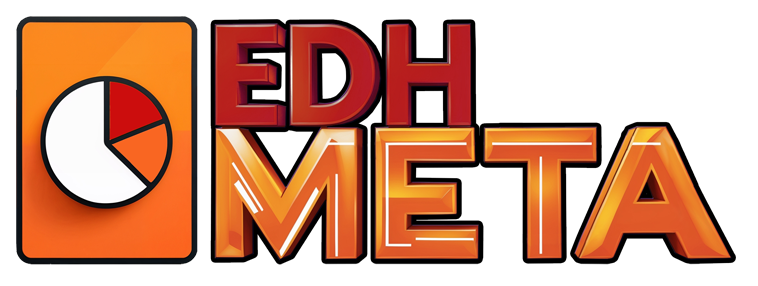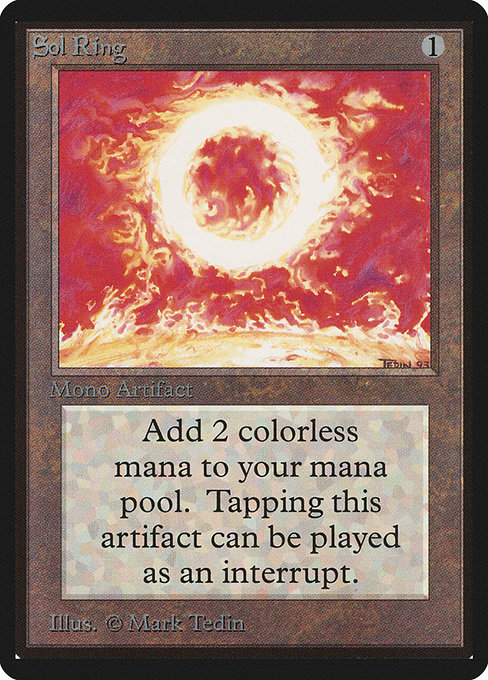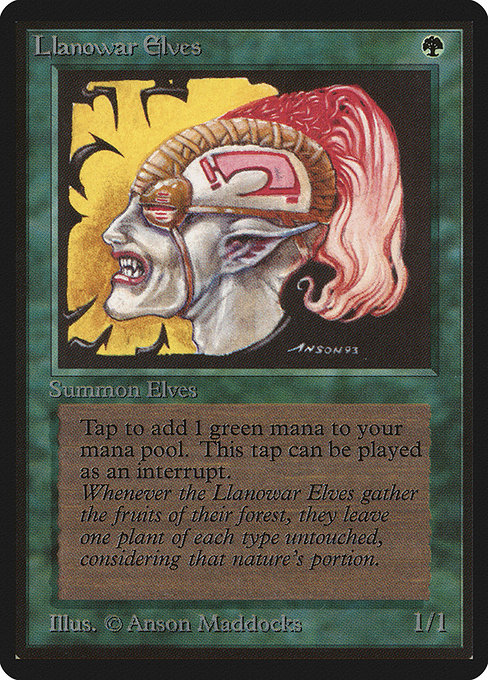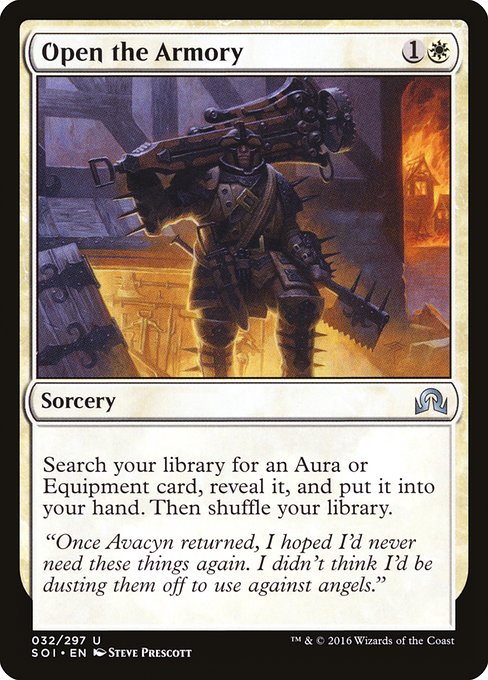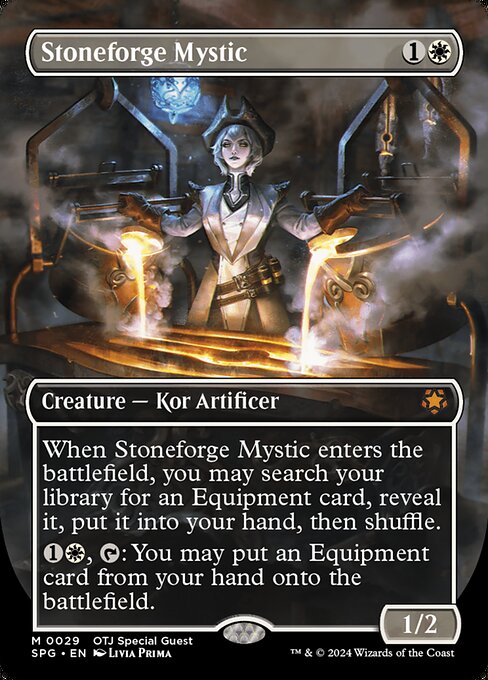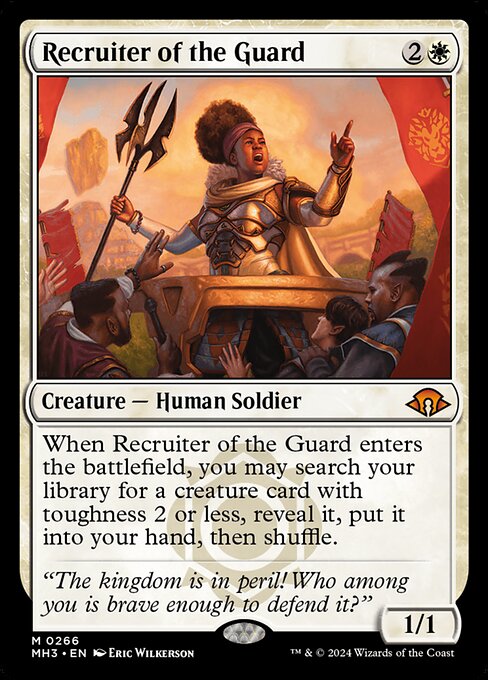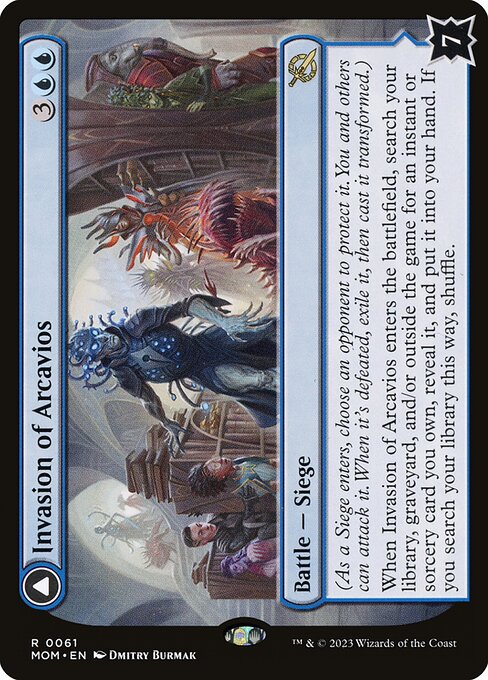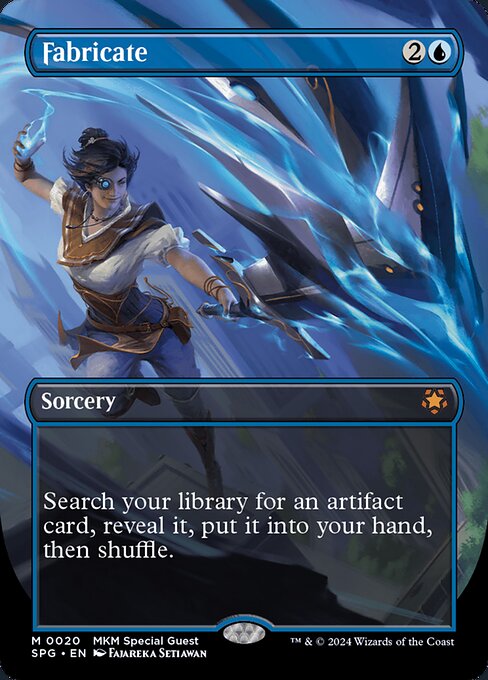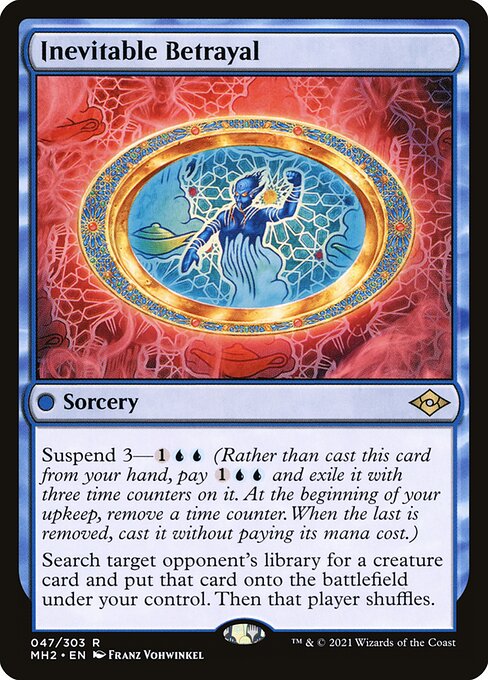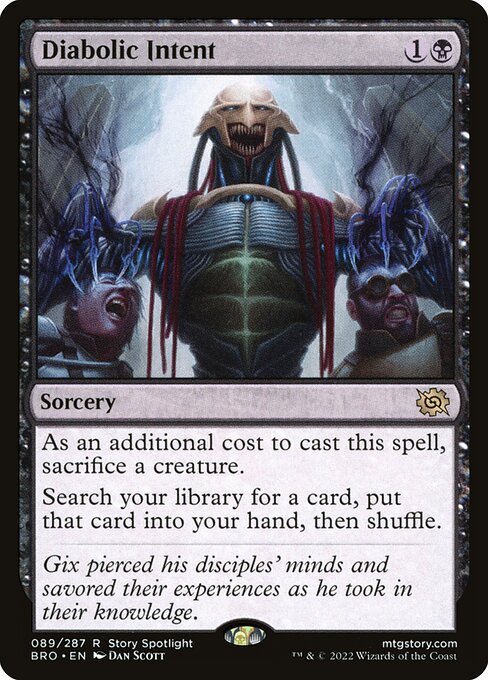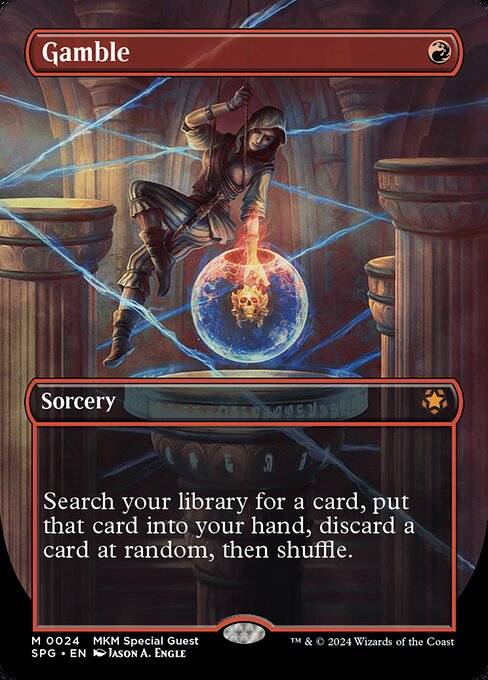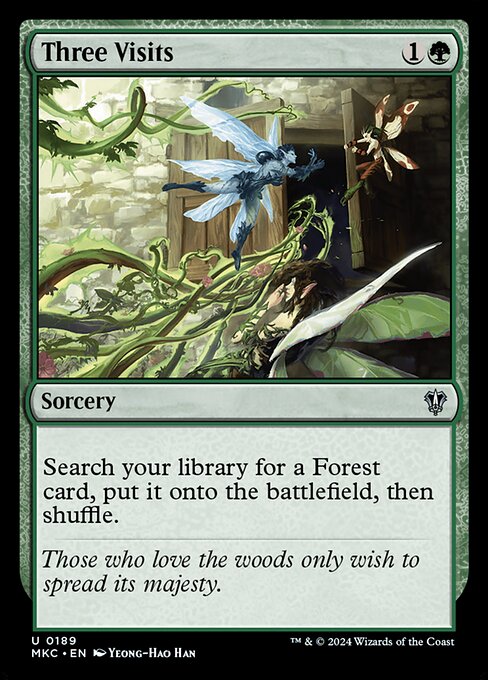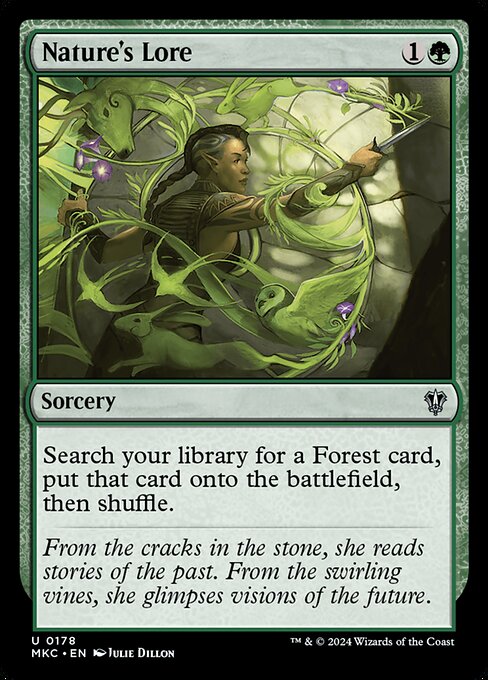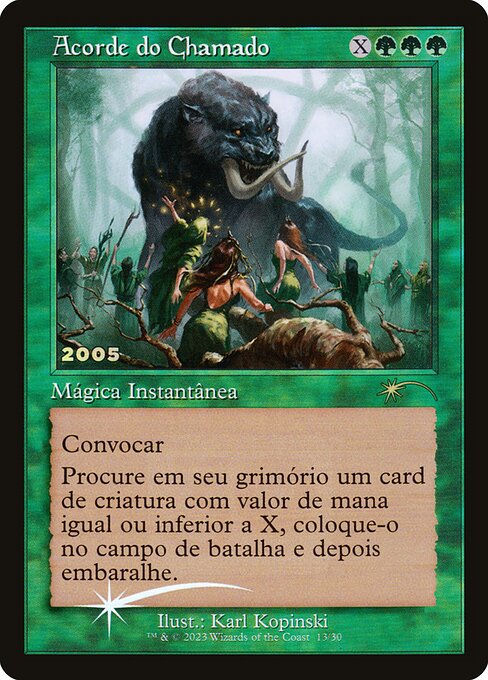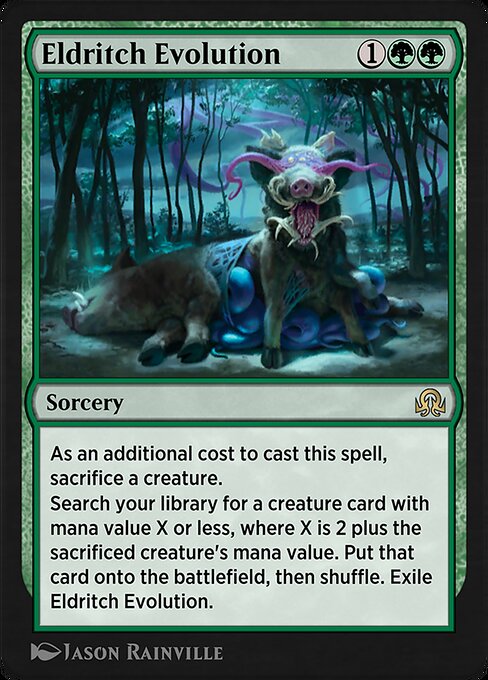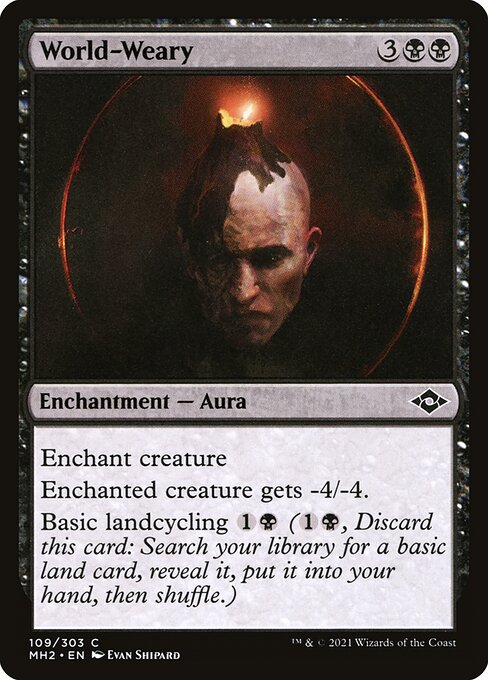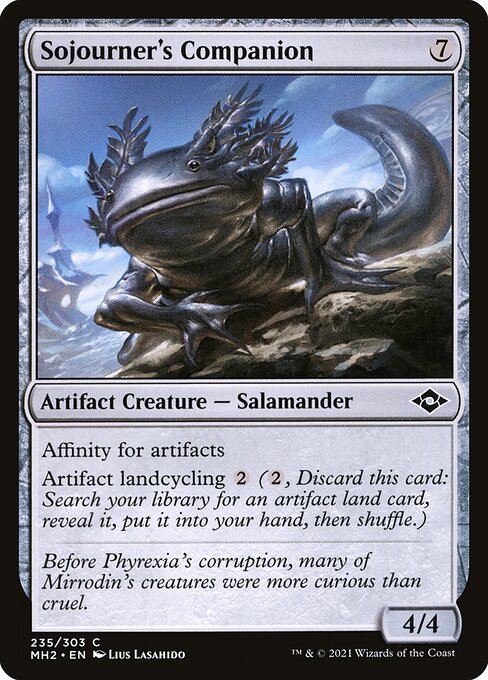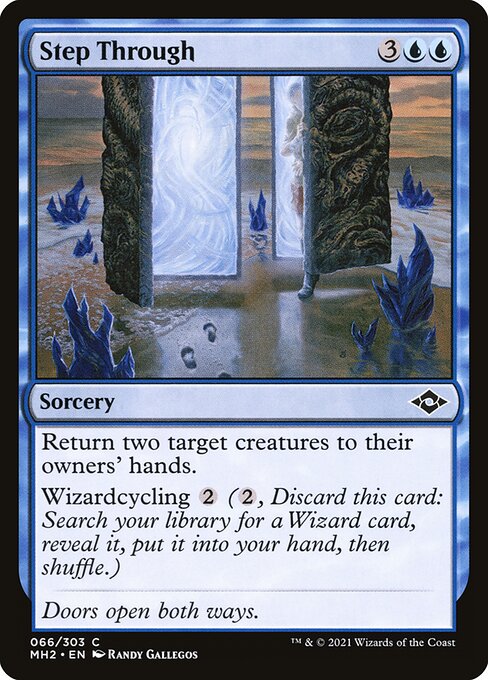Consistency, consistency, consistency, something that every Commander deck needs and gains from mulligans and tutors. This is the most important part of any Commander deck. If your deck isn’t consistent, you’re never going to see the cards you need. Knowing when to mulligan and having a toolbox of tutors helps to succeed in any deck.

Mulligans
In Commander, you always have one free mulligan, meaning you can shuffle a hand you don’t want to play back into the deck and try again. After that, every mulligan you take will force you to put a card from your hand on the bottom of your library.
Mulligans are what make Magic so unique. There’s a strategy to mulligans of “should I keep or should I mull?” The answer to that question is a bit more complex than meets the eye.
There are obvious mulligans, such as when you have no lands or all lands, since that hand won’t do anything. There’s no reason to keep that hand.
In general, you want a balance of lands and nonlands in your hand. Land-wise, you want at least three. You can get away with just two lands if you have a mana rock like Sol Ring in your hand. Or, if you have other mana rocks like Arcane Signet, you can consider that as a land if you have at least two lands. Mana dorks such as Llanowar Elves can also be considered a land in your hand (assuming you have the mana to cast it).
Forced Mulligans
Even if you have the right ratio of lands and nonlands, you may still want to mulligan if you don’t have anything to do. For example, your nonlands may only be ramp, but that doesn’t actually do anything but give you a ton of lands. You want cards that advance your gamestate in more ways than just mana generation.
Sometimes, you’ll be “forced” to keep a hand if you’ve already had to mulligan a few times. In cases like this, there’s not much you can do but hope you get lucky with draws. If you don’t see at least two lands in your hand, it’s got to go back, no matter how painful that might be.
Tutors
Commander decks are 99 cards (plus your commander). As such, the odds of you drawing a specific card in it are very low. This is what makes tutors so important.
Tutors are cards that allow you to search your library for a card to put it directly into your hand or on top of your library. There are various kinds of tutors, and each color has its own specialty in regard to tutoring. Green has land tutoring like Sylvan Scrying, Blue can tutor for instants and sorceries as seen on Mystical Tutor, and Black can tutor for any card with tutors like Demonic Tutor.
Tutors add consistency to your deck. They allow you to see your key cards consistently and can essentially be considered one less card in your deck, as it is only used to tutor out a different one.
Generally, you want to play as many tutors as possible. There is no downside to tutors, so the only time your deck shouldn’t have tutors is if you’re playing in a lower power bracket.
White Tutors
For White tutors, these generally search for either an artifact, an enchantment, lands, or weaker creatures. The most well-known tutor in White is Enlightened Tutor, as it’s the most “generic one.” Similarly, Idyllic Tutor is another card to get any enchantment into your hand.
White has plenty of ways to tutor for Equipment and Auras. This is why White is such a common color for Voltron decks. Open the Armory gets you either of those card types, while Steelshaper's Gift and Stoneforge Mystic tutor out for any Equipment.
White has ways to tutor out for creatures. Generally, these are only for creatures of specific mana values or power/toughness. The two notable ones are Ranger-Captain of Eos which tutors for a creature with mana value of one or less, and Recruiter of the Guard that tutors for a creature with two or less toughness.
Some of White’s tutors are unique in that they require an opponent to have more of something. This is primarily how White tutors for lands. Examples include Land Tax, Gift of Estates, and Loyal Warhound.
Finally, White has access to planeswalker tutors. White is the only color that can look for a non-specific planeswalker. Call The Gatewatch nets you a planeswalker, Ignite the Beacon gets you two, and Arena Rector searches for a planeswalker on death.
Blue Tutors
Blue tutors are most known for being able to search for instant and sorcery cards. They gained this trait thanks to Mystical Tutor. This trend continues to this day, appearing on Solve the Equation and Invasion of Arcavios.
Blue has access to plenty of artifact tutors, and is the best color for them. Sometimes, they go into hand with cards like Fabricate, and other times they go directly on the battlefield. This can be found on Tinker and Whir of Invention.
There is a subset of tutors in Blue that let you tutor your opponents’ cards from their libraries. Acquire plays into Blue’s artifact tutoring. Bribery gets you any creature card, as does Inevitable Betrayal at the cost of needing to be suspended.
Black Tutors
Black is the best color at tutoring, and it’s what gave tutoring its name. Demonic Tutor was the first ever tutor, and showcases Black’s strength in tutoring. Unlike many other colors, Black can tutor for any card with no restriction. Vampiric Tutor and Diabolic Tutor both show this feature of Black off.
Black has a subset of tutors that require a cost in order to tutor fo a card. Demonic Bargain needs you to exile the top 13 cards of your library. Diabolic Intent needs a creature to be sacrificed. Scheming Symmetry gives you any card, but lets an opponent do the same.
Black has a unique aspect of tutors where some put cards into the graveyard instead of into your hand. One of the best Black archetypes is Reanimator, so these cards are especially strong to set up your graveyard. Entomb sticks any card into the graveyard. Final Parting is the best of both worlds, putting one card into the graveyard and the other into your hand. Oriq Loremage can dump any card into the graveyard by tapping itself, and gets a boost if it was an instant or sorcery.
Red Tutors
If you’re in Red then you’re out of luck. Every color has a weakness, and one of Red’s is that it doesn’t have access to much tutoring. The only traditional tutor in Red is Gamble, which might make you discard the card you tutored for. Wild Research is similar, but requires White mana to actually tutor with.
Instead of being generic tutors, most Red tutors can search for specific creature types. Goblins are the most common, with various creatures like Goblin Matron, Goblin Recruiter, and Moggcatcher.
The other primary creature type that Red can tutor for are Dragons. Sarkhan's Triumph can tutor for Dragons directly. Zirilan of the Claw puts Dragons onto the battlefield directly. If you cast a ton of spells, Dragonstorm can tutor out a bunch of Dragons and stick them on the battlefield.
Green Tutors
Green is the color that has access to the most tutors. This is largely because of how many ramp cards there are in Green which can put lands into your hand or onto the battlefield directly. The best land tutors are ones that look for a specific land type, such as Farseek, Three Visits, and Nature's Lore.
In addition to being the best at tutoring for lands, Green is also the best at tutoring for creatures. Both Worldly Tutor and Sylvan Tutor put a creature on top of your library, with one being an instant and the other a sorcery. Summoner's Pact gets any creature into your hand for free, but you will have to pay four mana on your next turn.
Another form of Green creature tutoring is through paying an cost to put a creature onto the battlefield directly. Green Sun's Zenith is the vanilla version of this effect, while Finale of Devastation can give creatures haste and a stat boost and Chord of Calling has convoke to make it easier to bring a big creature out.
Green creature tutors have a sub-genre that brings them onto the battlefield directly at the cost of sacrificing a creature. Natural Order requires you to sacrifice a Green creature for another Green creature. Magus of the Order has an identical effect to Natural Order but needs to sacrifice itself and another creature while also tapping itself.
Multi-Colored Tutors
While it may seem like multi-colored cards have access to multiple tutors, this isn’t actually the case. In fact, multi-colored tutors are surprisingly rare. Rather than having unique traits, they share traits with the color they have. For example, Congregation at Dawn and Eladamri's Call both tutor for creatures, something White and Green are known for.
Two cards may have different color identities, but accomplish the same effect since they share a color. Both Fighter Class and Nazahn, Revered Bladesmith tutor for Equipment, something White is known for and both can do since they have White in their color identity.
Simic in particular has multiple tutors that require you to sacrifice a permanent to bring one of a greater mana value out. Prime Speaker Vannifar sacrifices a creature to put it onto the battlefield while Neoform does the same but adds on a +1/+1 counter onto the creature as well. Enigmatic Incarnation trades an enchantment for a creature, letting you replace an enchantment that used its effect with a more impactful creature.
Transmute
Transmute is a unique mechanic that is exclusive to the Dimir color pairing. This is an ability that allows you to discard a card while paying for its transmute cost to tutor for a card with the same mana value as the discarded card. Every card with transmute costs three mana to use its transmute ability, but the mana required varies between cards.
The best spells with transmute are ones that can be used in the game itself. Muddle the Mixture can be used as a counterspell or a tutor. Dimir Infiltrator is an unblockable creature. Perplex is another counterspell that requires an opponent to discard their hand if they want their spell to resolve. There are not a large number of transmute cards, but these three along with Dimir House Guard are the best ones.
Cycling
Tutoring is also found on some cycling cards. Normally, cycling is an ability where you discard the card with cycling to draw a card. However, certain cards can cycle themselves for specific cards.
The most common form of cycling tutoring is land cycling. These can look for a specific land type, such as a Swamp as seen on Twisted Abomination, or sometimes just a basic land, as is the case with World-Weary. They can also look for a specific land type when you cycle, such as with Sojourner's Companion.
Although it is not super common, sometimes, these cyclers can tutor for specific creature types. These are useful for decks playing those creature types, as they give you a free tutor to work with. Both Vedalken Aethermage and Step Through can cycle themselves to tutor for a Wizard card. You can use Homing Sliver as a way to tutor for a specific sliver, or give all your Slivers the ability to slivercycle.
In Conclusion
Consistency is the most important aspect of every Commander deck. Without it, you’ll be stuck having to mulligan constantly, and you’ll have fewer games where you get to actually play Magic. Mulligans are a nice way to ensure you have a playable hand, but without consistency tools like tutors, things get tougher.
It is important to note that in the first and second tiers of Commander brackets, only a few tutors are allowed in your decks. Anything three and above lets tutors be fair game (sans ones that are on the Game Changers list). In the higher tiers (and especially in bracket five/cEDH), tutors are a necessity if you want to keep up. cEDH is a format all about having the most consistent deck as possible that can win as quickly as possible, and your tutors help to minimize variance, something that’s bound to be around when your decks consist of 99 cards.
The best tutors are the ones that only cost one mana and that you can cast at instant speed. This lets you use your tutors at the start of your upkeep so you can draw the card you tutored for if it went to the top of the library.
When building up your card collection, tutors are one of the cards that you should always be on the lookout for, as they are the most powerful type of card you can run in Commander. In a format with such high variance, the more you can mitigate it, the more powerful your decks will be. So stock up on as many tutors as possible.
